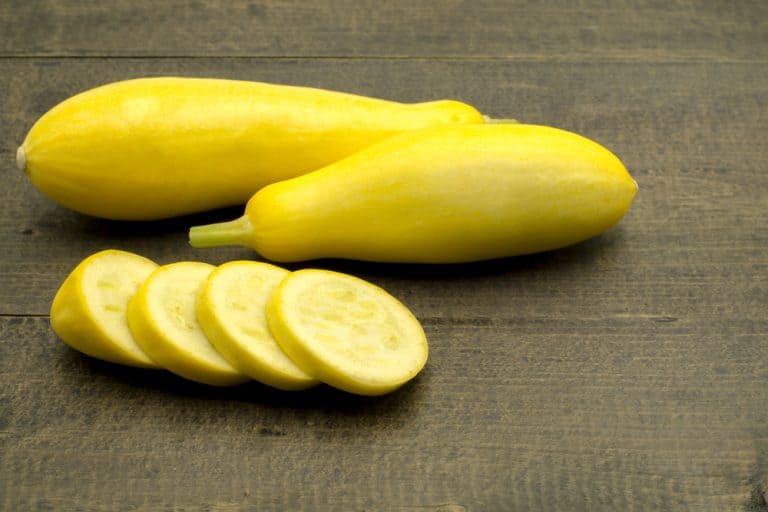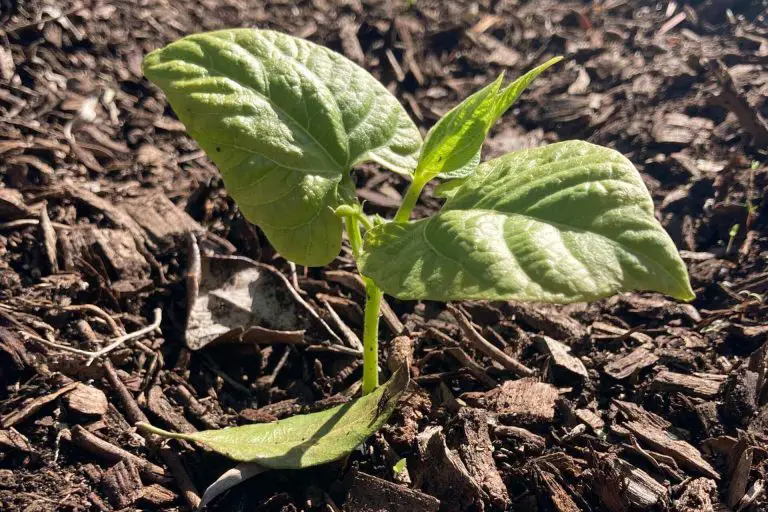How To Grow Oxheart Tomatoes+ Unique Growing Tips [2022]
If you have been wondering how to grow oxheart tomatoes, you are reading the right article!
Perhaps you have read about or seen images of oxheart tomatoes?
Oxhearts may seem like a brand-new type to someone who is unfamiliar with them, but they have actually been in existence for almost a century.
This heart shaped tomato plant is distinguished by its big, meaty fruits.
Oxheart tomatoes are well-liked by plenty of gardeners because they produce large fruit and require little upkeep.
Let’s get into this article where you learn all there is to know on how to grow oxheart tomatoes!
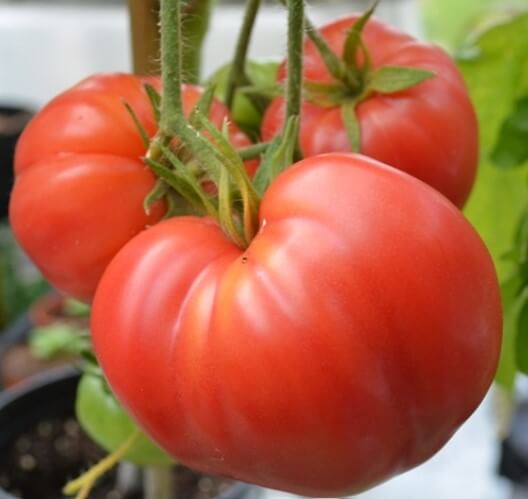
Summary
Step 1: Planting The Seeds
Step 2: Temperature Requirements
Step 3: Light Requirements
Step 4: Placement Of Seeds
Step 5: Pollination
Step 6: Support
Disclosure – Some of the links here are affiliate links, and I may earn if you click on them, AT NO EXTRA cost to you. I hope you find the information here useful! Thanks!
Related Posts
- Aquaponic Tomatoes: How To Grow, Common Issues + Best Varieties [2022]
- What Is Eating My Tomatoes And How To Fix It!
- How Many Tomatoes Per Plant And How To Grow More!
- How To Grow Moneymaker Tomatoes +Tips To Grow Faster! [2022]
How To Grow Oxheart Tomatoes – A Simple Guide
The essence of growing a red oxheart tomato is this.
Sow the oxheart tomato seeds in high-quality soil, place them where they will receive 6 to 8 hours of direct sunlight each day, and water them frequently.
Let’s get to the nitty-gritty details.
Step 1: Planting The Seeds
Be careful to select a spot that receives full sun when choosing where to grow your tomatoes.
When picking a place, companion planting (Simply said, companion planting is the practice of growing two plants together for the benefit of either one or both of them) is something else to consider because tomatoes do have a lot of pests and problems to deal with.
Planting close to favorable surroundings can assist to reduce some of those problems.
Although placing your seeds in the ground is very simple, there is one trick you might have overlooked.
Remove all the branches and leave about 2 to 3.
Place the long stem in the soil after that. Tomatoes are extremely interesting in that they will develop underground roots along the stem.
By placing them in this manner, you will offer your plant stronger roots, which will improve its resistance to wind and other environmental factors.
Step 2: Temperature Requirements
Oxheart tomatoes, like the majority of tomatoes, can be planted after the soil reaches a temperature of at least 50 degrees F.
The oxheart tomato has a high level of disease resistance, making it less susceptible to common tomato pests and illnesses.
Step 3: Light Requirements
It is best to offer oxheart tomatoes some partial sunlight or light shade rather than too much direct sunlight when planting them.
Oxheart tomatoes require at least 8 hours of sunlight to develop effectively and quickly enough to yield a large crop.
Plants can become stunted and develop considerably more slowly in the absence of adequate light, which could lead to a smaller crop for you.
With proper light, you can prevent the meat of the oxheart tomato from being pale, practically white, and having horrible skin.
Step 4: Placement Of Seeds
Oxheart tomatoes grow tall and continue to provide fruit throughout the growing season. Understanding this is crucial because you should carefully place your plants around 24 to 36 inches apart.
To grow healthily, obtain enough air circulation, prevent illness, and produce a larger crop, tomatoes need space.
So, why should you not cram the seed in the tray?
With restricted space, you will have reduced airflow which makes it easier for pests to reproduce and can spread disease.
Your plants will have reduced sunlight penetration since their leaves will shade tomato plants nearby and vice versa.
Tomatoes are heavy growers, which means they require a lot of resources to produce fruit. Without these nutrients, your tomatoes can be smaller or your plants might produce a lot of foliage but no blossoms.
When you place the tomatoes close to each other, they will compete for the essential nutrients required and therefore lead to stunted growth.
Step 5: Pollination
When the oxheart tomato plant grows big enough to set flowers, which takes around 10 days, those flowers should be pollinated. The plant will start producing fruits where the blooms were once they have been pollinated.
You can manually pollinate the blooms if your garden doesn’t draw a lot of pollinators.
Step 6: Support
You should make sure your tomatoes have some heavy-duty support in place due to the size of the oxheart tomato.
The fruits of Oxheart tomatoes can weigh anywhere from 1 to 3 pounds each, so make sure to give them some support.
Stakes or a tomato cage will work well for this. Here are some suggestions:
The main stem must be attached loosely to the stake and at least one stake must be buried near the stem’s base.
Large branches bearing weighty fruit will also require support. When this happens, employing a tomato cage can be your best choice.
FAQs
What Are Oxheart Tomatoes?
An heirloom tomato variety with Virginian roots is called oxheart.They are well named because the fully grown fruits have a heart-like appearance, with two sizable, rounded lobes close to the stem and a tapered point at the fruit’s base.
Oxheart tomatoes are a terrific kind for slicing, but they also work well for stuffing and as a sauce tomato. The oxheart tomato is well-liked for slicing in part because it has few seeds and a strong tomato flavor.
They have a really significant vitamin C and A content and are adored for their luscious, meaty texture and sweet flavor.
Their size is another factor contributing to their popularity. Your entire slice of bread will be covered by one huge Oxheart slice. A tomato sandwich lover’s fantasy, right there!
Since oxheart tomatoes are indeterminate, they will continue to produce during your region’s whole growing season. Compared to other tomato kinds, an oxheart tomato’s plant leaves may be a little bit more frilly or fern-like.
Varieties Of Oxheart Tomatoes
Most oxheart kinds are indeterminate tomatoes, which means they get taller and continue to produce tomatoes all season long.
Here are some varieties of these beautiful ox heart tomatoes.
1. Orange Oxheart Tomato
These tomatoes produce fruits that are delicious, meaty, juicy, and seedless. The huge tomatoes can be used in salads, but they also work well for canning or producing lovely, mildly acidic pale orange sauces.
Get the seeds here.
2. Oxheart Pink Tomato
This gorgeous indeterminate oxheart pink resembles a giant strawberry thanks to its pointy bottom and pink skin.
This fruit can be as heavy as two pounds. The pink flesh bursts with sun-sweet tomato flavor and plenty of liquid, making it ideal for eating with your hands off of a plate.
Get the seeds here.
3. Japanese Oxheart Tomato
The flesh of Japanese oxheart tomatoes is deliciously thick and meaty. If you want the ideal tomato for a sandwich, these are fantastic.
They are large pink fruits with meat that is dense and only faintly sweet.
Get the seeds here.
4. Anna Russian
The Anna Russian tomato is a rich, complex-tasting heirloom cultivar that bears fruit early in the growing season.
Since oxheart-type tomatoes typically have sparse foliage and fragile vines, do not be put off by the plant’s delicate greenery as you cultivate it. These heart shaped tomatoes grow in clumps of two to three and become pink-red as it ripens.
Get the seeds here.
Things You Need To Grow Oxheart Tomatoes
- Light and heat source
- Good quality soil
- Seed starting trays
1. Light And Heat Source
When it comes to heat sources, pay attention during the winters.
Oxheart tomato plants typically need temps between 70 and 85 degrees to sprout. A great approach to guarantee good germination rates is with heat mats.
As for light, most windowsills do not offer sufficient light for optimal plant growth.
Use a grow light to provide the seedlings with all the light they require and ensure healthy germination.
2. Good Quality Soil
Tomatoes grow best in loam soils, although all soil types, with the exception of heavy clay, are suitable for growing them. The soil should have good drainage and be rather loose.
In addition to not growing well in dry soil, tomatoes also should not be planted in soil that is very damp, soggy, or in areas where standing water collects after a rainstorm.
Tomatoes thrive in soil that is relatively fertile and rich with organic stuff such as an all-purpose fertilizer with potassium and phosphorus. Avoid using fertilizers with a high nitrogen content because they may lead plants to grow bushy and bear few fruits.
Having your soil tested is a fantastic place to start while getting ready for your garden. Most garden supply stores have soil test kits, here are some recommendations:
3. Seed Starting Trays
Without having to deal with individual pots, seed starting trays let you grow many tomato seeds in a compact area.
The trays come in a variety of sizes, but they typically include an outer tray to capture dripping rainwater and an inside tray with tiny slots in the bottom to hold soil.
Here are some options for you to consider:
Pest Threats When Planting Oxheart Tomatoes
Like most gardening and agricultural products, oxheart tomato plants are vulnerable to the weather, weeds, and pests. Taking good care of these plants and making sure they are not harmed by common risks can assist and enhance the yield of tomatoes.
These worms are among the common types of pests that harm an oxheart tomato:
- Vegetable hornworms
- Armyworms
- Cutworms
- Loopers
Another pest to look out for is the aphid.
Aphids are widespread sap-sucking insects that serve as the foundation of numerous food chains.
The sap-sucking can reduce crop growth, disrupt growth, and frequently produce a sticky material that can support the formation of sooty mold. Some aphids spread viruses to plants.
Since aphids grow quickly, it’s critical to eradicate them before they may begin to reproduce.
A strong stream of water sprayed across infected plants may help to flush out aphids in some cases.
Aphids can be controlled with neem oil, insecticidal soaps, and horticultural oils, but these products must come into contact with the pests in order to be effective.
Make sure to adhere to the application guidelines listed on the packaging, should you try this method.
Best Growing Areas For Oxheart Tomatoes
An area that can have good quality soil, a good drainage system, and can provide the tomatoes with adequate sunlight is great for growing oxheart tomatoes.
To flourish, oxheart tomatoes require a lot of water and sunlight.
Growing tomatoes, a crop that consumes a lot of nutrients, requires rich soil with balanced nutrients.
In temperate regions with average rainfall such as Indiana and North Carolina, these tomatoes thrive.
Like with many crops, the success of the crop’s growth depends on the soil being properly irrigated and having good drainage.
For healthy growth, even individual tomato plants need sufficient drainage. A plant’s roots can become too wet, resulting in death.
To flourish, oxheart tomatoes require all-day sunlight. In locations with dry or sandy soil, applying a balanced fertilizer might be helpful, and routine irrigation can make up for a dry growing season.
Additionally, oxheart tomatoes can be grown in containers or indoors, such as in a glasshouse, considerably extending their growing season.
Are Oxheart Tomatoes Different From Other Heirloom Varieties?
Yes, they are. The striking heart shape, lobed top, enormous size, and weight of oxheart tomatoes set them apart from other types.
The majority of oxheart tomatoes are red, but you can also get them in orange, yellow, or purple hues, just like many other heritage tomatoes.
Although oxheart tomatoes are comparable in size to the beefsteak variety, their flavor and lack of seeds make them stand out from other large tomato varieties.
Conclusion
That is all you need to know on how to grow oxheart tomatoes.
Growing oxheart tomatoes is a well worthwhile process that will satisfy your cravings and allows you to grow your own food for your family and loved ones.
Hopefully, this article helped you to understand how to grow oxheart tomatoes and what that process looks like, and identify what is needed to grow healthy produce.
As you start to plan how you can use these oxheart tomatoes in your next dishes, what’s stopping you from delving deep into growing oxheart tomatoes?
Let us know in the comments section below about your experience growing oxheart tomatoes and what worked or did not work in your tomato growing experience!
Related Posts
















![Companion Planting For Chamomile: 9 Plants [2023]](https://aboveandbeyondgardening.com/wp-content/uploads/2022/11/companion-planting-chamomile-768x512.jpg)
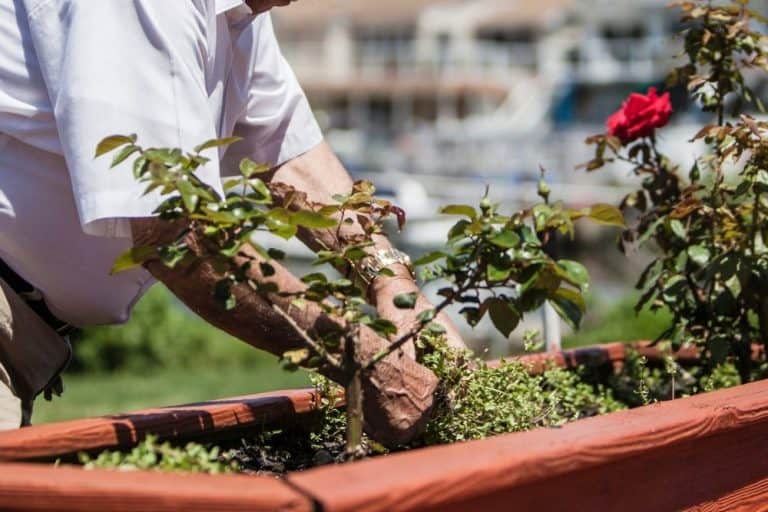
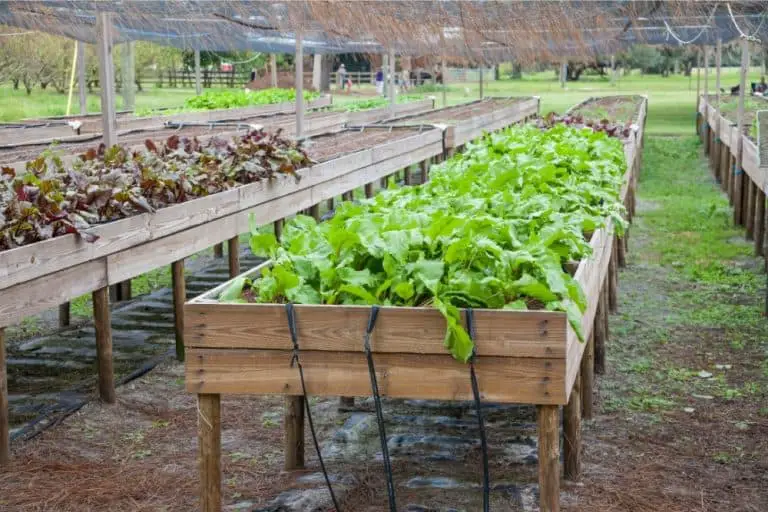
![How To Pick Mint Leaves Without Killing Plant -Exact Steps! [2023]](https://aboveandbeyondgardening.com/wp-content/uploads/2022/10/how-to-pick-mint-leaves-without-killing-plant-768x512.jpg)
